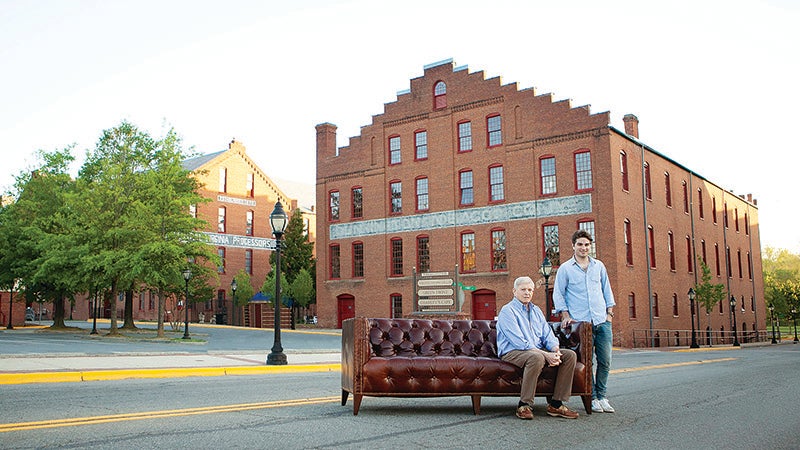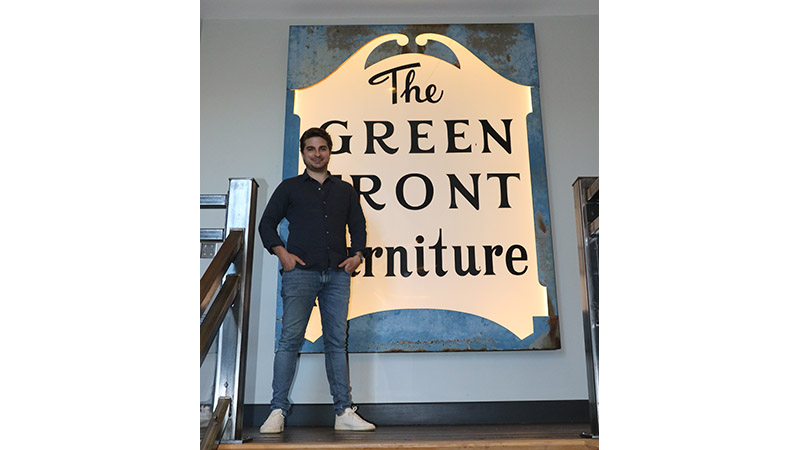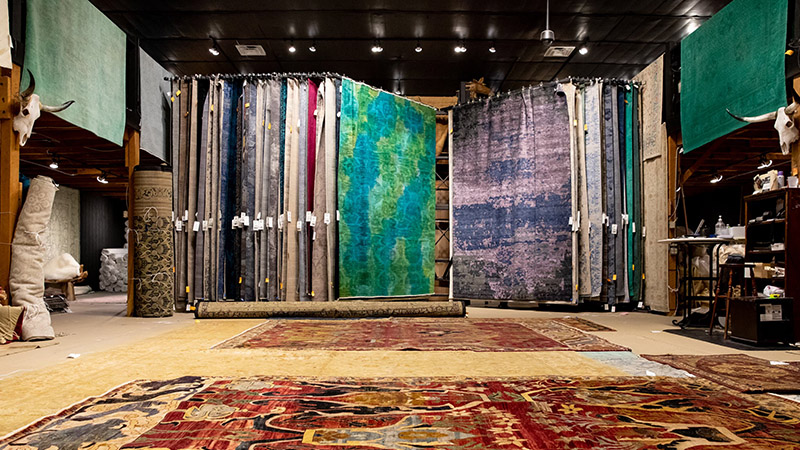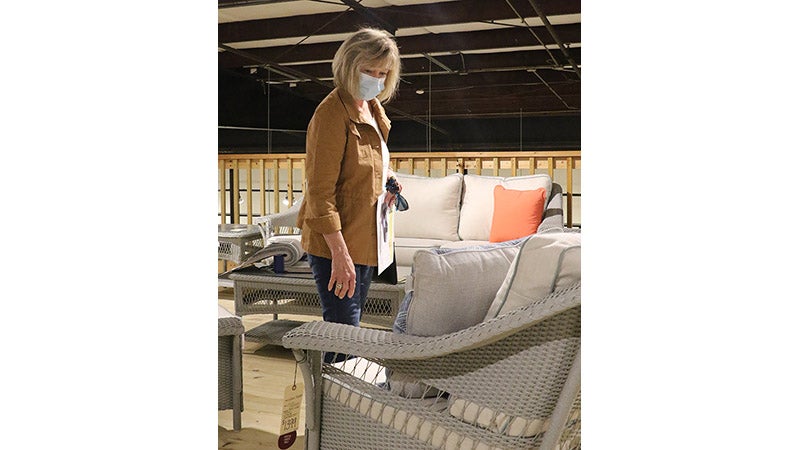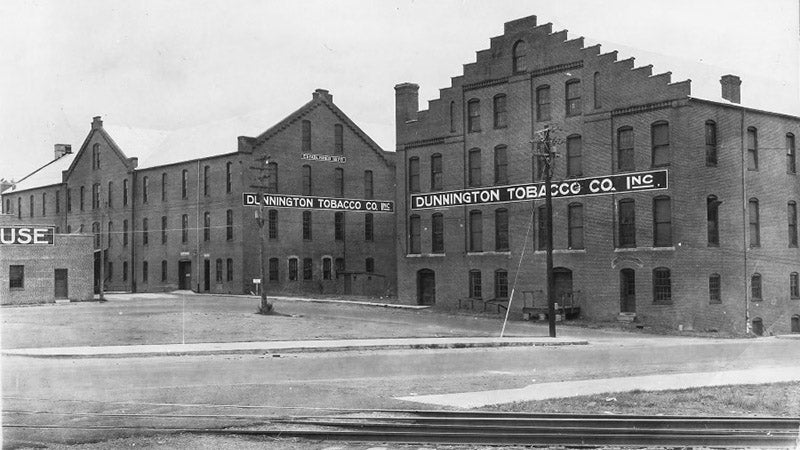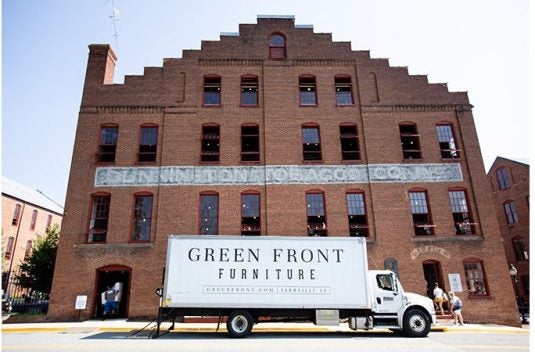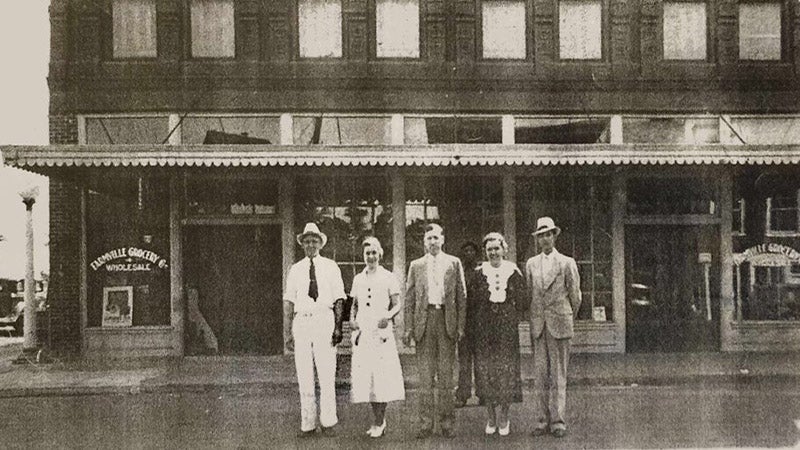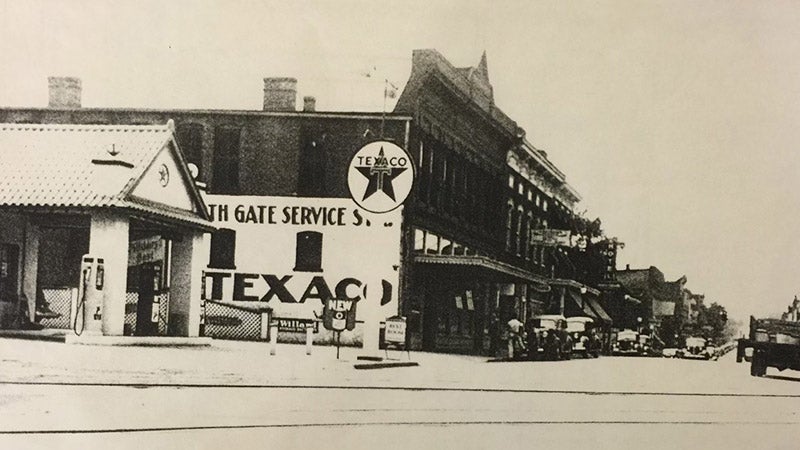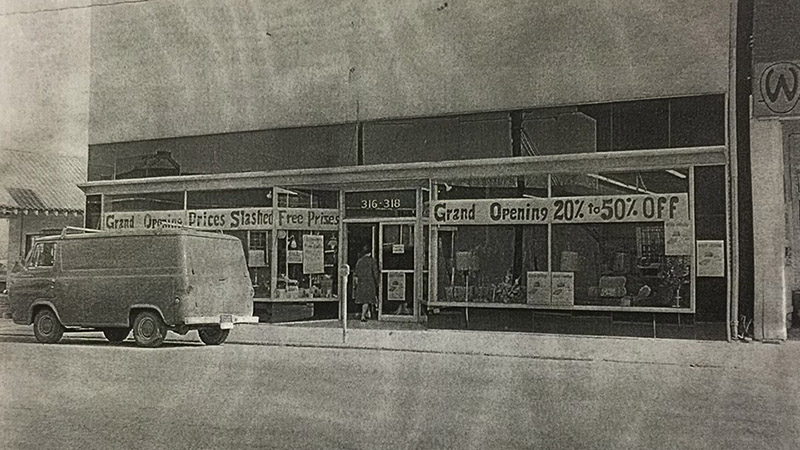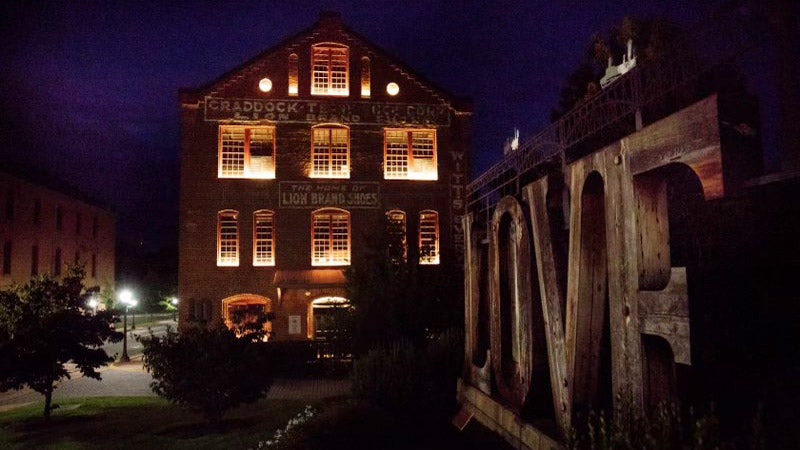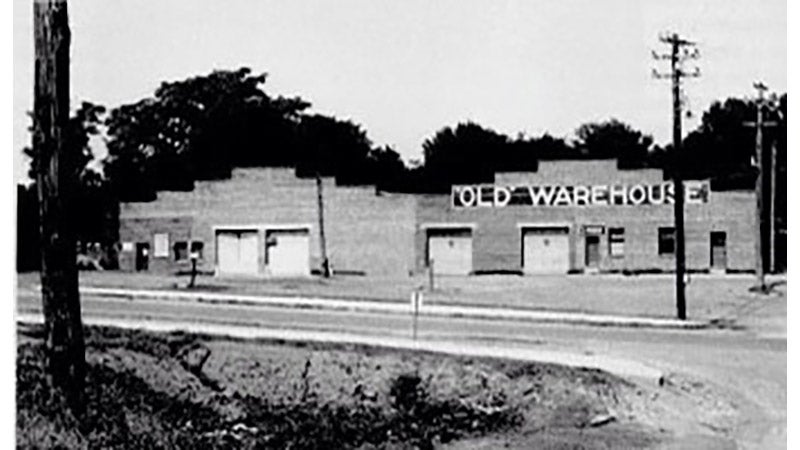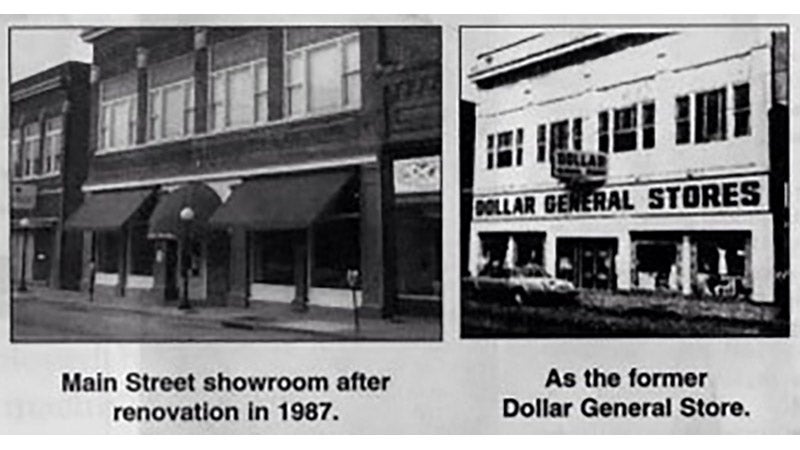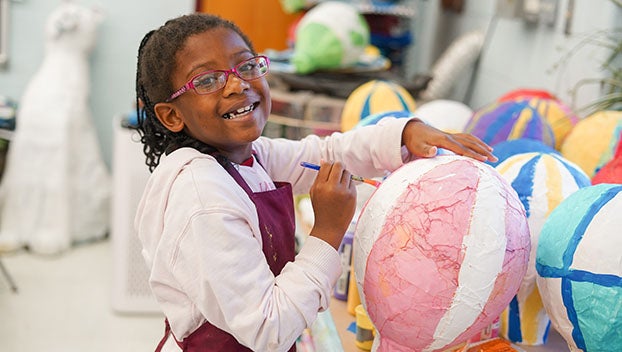The symbiosis of an icon
Published 6:00 am Wednesday, May 19, 2021
|
Getting your Trinity Audio player ready...
|
There is a short list of things that are synonymous with the Town of Farmville.
“I often tell people this,” Farmville Mayor David Whitus said. “When most anybody travels and you mention Farmville or (that) you’re from Farmville, you’re going to hear one of three things almost immediately — Longwood, Hampden-Sydney or Green Front — and it happens all the time. Wherever you go, Farmville is known for one of those three things.”
He noted that Green Front Furniture is definitely an icon in the Farmville community.
Gerry Spates, who was town manager of Farmville for 41 years before retiring in 2019, agreed.
“I think Green Front comes up more than anything, everywhere you go,” he said.
Green Front Furniture is a business founded in Farmville in 1968 owned by the local Crallé family.
The company has expanded to include locations in Manassas and also Raleigh, North Carolina, but the primary location for Green Front is and always has been downtown Farmville.
It is there, spread across both sides of North Main Street, that the business has grown to fill 13 different buildings — historic tobacco warehouses and revitalized department stores — that give customers approximately 1 million square feet of showrooms to explore.
This includes Accessories Inc. at Green Front, which is a sister company that Dianne Cunningham partnered with Green Front Owner Richard “Dickie” Crallé to launch, offering exclusive home decor and accessories.
Green Front carries furniture and home decor, organized by the store’s buildings and floors, from more than 175 manufacturers, and one of the company’s key distinctions is that its prices are highly discounted off normal retail pricing.
The business has also expanded into rugs, carrying a sizable inventory.
Across the Farmville, Manassas and Raleigh locations, Green Front employs 110 to 120 people and has an average annual revenue between $50 and $60 million.
And as Green Front Furniture President Richard “Den” Crallé III explains, none of it would have been possible without Farmville.
Sharing the history of the company, Den noted Green Front started as a grocery store called Crallé Grocery on Main Street in downtown Farmville. It was specifically located in what is now Green Front Building 5, which is part of Accessories Inc.
Den said the grocery store, which started operation around the late ’30s and 1940s time frame, was run by his grandfather, Richard Crallé Sr.
Den’s father, Dickie, was born in 1941 and helped out at the store as a kid. After high school, he stayed local and went to Hampden-Sydney College and was always either at school or working.
“He’s always had that work ethic and was never too far from home,” Den said. “So he graduated college in ’65.”
Dickie continued to work with his father.
Den said the small-town grocery store worked, but then bigger supermarkets started to come along.
“So then my dad just had the idea of selling cheap furniture,” Den said, referencing lawn furniture. “Really just nothing special but just something to take up some room and make some money on.”
The name of the business eventually changed from Crallé Grocery to Green Front Grocery.
“I’ve heard two reasons why it was called ‘Green Front,’” Den said. “One of them is that back in the day, Red Front (Trading Company) was there too. Different categories of stores had different colors at the front … And I’ve heard another (theory) where they put the fresh produce out at the front of grocery stores because they had to move faster, like the cabbage and things like that.”
But theories aside, Den noted he has never gotten a definitive answer to the question of where the name “Green Front” came from.
Green Front Grocery continued conducting business until Leggett’s Department Store came to town. It bought a few storefronts on Main Street, including Green Front Grocery, and converted them to make one Leggett’s store.
Den said his family ended up saying, “Well, no more groceries. Let’s just move to this building and just do furniture.”
It was Dickie who spearheaded Green Front’s furniture effort, officially taking over the company from his father in the 1960s.
Green Front Grocery became Green Front Furniture and moved to 316 N. Main St., which is the current location of Building 1, also known as the Main Building.
In the 1960s and 1970s, Green Front Furniture was nothing special yet, Den said, but exciting and important things were happening.
“My dad started to really kind of make some deals — nothing really high end yet,” he said, adding that it was still just your basic furniture store. “Every town has a store like this where you get your furniture.
“But then he started to have these relationships with people down in High Point, North Carolina,” Den continued. “That’s where the big furniture market is and a lot of the manufacturing, so he got with them and then just started to try to buy a little bit more in bulk but at good prices and just pass that along. So there wasn’t that huge markup that I think a lot of furniture stores are known for, and that kind of set him apart.”
Green Front had Building 1, but then Dickie added some steel span buildings.
“It was an OK-sized furniture store, but where it really took off is when (buildings) 7, 8 and 9 came available, and that was about late ’80s, early ’90s,” Den said.
He noted his father purchased, at a remarkably good price point, these buildings, which were old tobacco warehouses and factories that were not in use.
“So he put some money into renovating them enough, but that’s where we were able to really showcase just a lot of furniture and then buy bigger,” Den said. “And then if you buy in bulk, you can save money and then pass that along. So he started to do that.”
As for whether the purchase of new buildings influenced Dickie to buy more furniture or if his desire to buy more furniture motivated the building purchases, Den said it was a little bit of both.
“I think the fact that they came on at one time on the market, he just couldn’t pass it up,” Den said. “It was a gamble. It’s not like we had a bunch of stuff just waiting to be shown. I think it was kind of, ‘Hey, let’s buy these buildings and kind of see what happens,’ because there was no business model, business plan.”
Den described these decisions his father was making as being informed by gut instinct, and they coincided with another key action his father began taking.
“Also in the late ’80s, he started going to India (and was) one of the first guys to really start going direct and buying from those manufacturers compared to going to New York City or Atlanta and working with other wholesalers,” Den said. “We still get the containers directly from India or Pakistan.”
He said this was a thing that really differentiated Green Front.
“And then also in the ’90s and then early 2000s, these department stores started to be available,” Den said, noting his father made timely purchases of them. “Building 6, that was a Dollar General, and then it was like a Davis and I guess another sort of general store. Once you were in the ’90s, that stuff is moving out (to) sort of where Belk is now and Walmart.
“The downtown sort of dollar general store, that was kind of archaic, so he bought these buildings for not a lot,” Den said. “Building 5 came back (to Green Front), and then there was also Baldwin’s, and that was about (the year) 2000, that was Building 15. That clothing company, they just went out of business.”
Den noted that for some of these stores, the business models just did not work anymore, and then also, referencing the warehouses and factories, he said the tobacco industry kind of fell out of favor a bit.
“So what do you do with all these cool buildings that Farmville has?” Den asked, with Green Front Furniture serving as the understood answer. “That’s the beauty of it. You couldn’t do it without Farmville.”
Not only was Farmville’s geographical position ideal, since a lot of furniture is still made in Virginia and North Carolina, the town became a good match for Green Front because of the downtown spaces it came to offer.
“I don’t think this would have been successful, really, anywhere else, because you have to have these (buildings) with the town that somehow happen to have these gorgeous structures because back in the day that’s how they made their money,” Den said.
“It’s cool to see that Green Front became something because of what was already here. It’s not like someone is from New York City and decided, ‘This business model seems good. I’m going to open one in Farmville.’ It was very organic, which I think is kind of cool, and I think customers think it’s cool.”
Den said it was the late ’80s and early ’90s, with the addition of the buildings and inventory, that Green Front Furniture became something people know about and talk about.
The company is a major presence on the east coast. Den commented that the Farmville location draws people from Florida, Texas, New York and more.
Dickie affirmed he did not anticipate Green Front becoming what it has today.
“Absolutely not,” he said. “God willing, everything came into place. Those warehouses came up for sale at very low prices. I went to India, like say, 40 years ago on a whim, and everything just came in by itself, and a lot of work — still working eight hours a day, six days a week.”
He said everybody in Farmville has worked with Green Front and helped it to be what it is, but he also said one has to look at the coincidences involved.
“Why were these warehouses where they are, and why did they come up for sale at the right time and the right prices?” he said. “Plus all of these department stores, same thing. They all moved to shopping centers and left the downtown vacant, and I was lucky enough — and I mean lucky enough — to take advantage of that.”
While the business’ customer base is broad, Den said most of it is still actually right in Farmville.
“Our local community supports us because we have everything from stuff you could get anywhere that’s just cool, comfy, fun, to super high end,” he said. “We try to cater to a lot of different people, but there’s certain things like the rugs that people just … they’ll come from anywhere in the country once they find out about us.”
The company’s collection of structures in downtown Farmville includes buildings 1-10, 12, 15 and 16.
“We have a distribution center. It’s technically still in Farmville but Cumberland County, and I just said, ‘OK, those will be 11 and 14,’ just to fill it in,” Den said. “But I guess there’s no 13 because I’m superstitious. Maybe customers wouldn’t go in.”
Den said he thinks his dad was before his time a little bit with his purchase and utilization of all the Green Front buildings.
“The whole layout and sort of how all these buildings are embedded into this Main Street community was just so cool and different,” he said, adding that now every company wants to have these kinds of buildings rather than malls or big-box stores. “It’s part of that dynamic of being in this little town, which made it cool because Farmville is a cool town.”
Customers visiting Green Front’s Farmville location can be seen unfolding and studying paper field guides that the company provides, which are reminiscent of amusement park maps, and these guides also double as partial maps of downtown Farmville, hinting at recreation, dining and lodging options the town offers.
Den emphasized that everyone can sell furniture, but the full experience that Green Front offers in Farmville is almost like visiting a theater.
“It’s just so different and unexpected, and I think that’s what draws people and keeps them coming back,” he said.
Den Cralle, 30, became president of Green Front Furniture in 2018, and since then his major focus has been to preside over a lot of the renovations to the company’s buildings, helping to showcase the products better and make the spaces more customer friendly, with directional signs, rebranding and more.
Dickie feels the warehouses will always belong to the town.
“Den and I both worked on those warehouses,” he said. “They were sold at fire sale prices, but they needed a lot of work, and I feel that these warehouses, we’re just the caretakers, the preservers of these historical buildings which make Green Front. And we’ve spent millions of dollars fixing them up, but they actually belong to the town. Like I said, we’re just caretakers, and you can’t own something like this.”
Den said the business is now putting a lot more effort and money into its website and overall web presence.
“We have such good people, and mostly everyone’s local, which is awesome, they’ve been here for a long time, and we have such cool buildings, and we have all these really nice furniture lines that my job is just to keep the ship — that’s already going — going in the right direction,” he said. “Because after a year like this, you’ve always just kind of got to be on your toes and be able to pivot. We’re set up in a good situation to be able to thrive.”
He highlighted some of the key figures who came before him to help with that setup, including his father, former General Manager John Wingo, who passed away in August 2018, and Cunningham.
“They all set up and had a lot of good things in place before, obviously, I got here, so I’m just trying to just make sure we stay relevant and keep that new customer base coming in,” Den said.
For now, his future plans for the company do not involve adding more buildings. Instead, he is focused on how he can make the existing buildings more inviting and comfortable.
“We have the most beautiful buildings and enough square footage that I’d rather put money into what we already have, and that’s kind of what we’ve been doing, building by building,” he said. “I think that’s been paying off.”
Dickie highlighted the complementary relationship he and his son have as they run Green Front.
“Den, my son, does stuff that I can’t do — all the computer stuff that needs to be done these days, printing up the guide, doing all the advertising on television, working with customers, taking care of complaints from customers, which I don’t have to do anymore,” he said. “What was missing from me, he’s very strong in, and we work great together.”
Spates, who has had a strong friendship with Dickie since 1975, said Dickie calls him at least once a month to give him an update on what is going on.
“His business is doing 10 times what it was doing three or four years ago, and it’s really taken off,” Spates said.
Den said that in recent weekends in February and March 2021, Green Front in Farmville has seen foot traffic that has been off the charts.
“We’ve never seen anything like it,” he said. “We’ve broken a few records. In the last, I would say, two months, there’s been some just record Saturdays.”
“Green Front is just unbelievable (with) what they’ve done,” Spates said, “and it’s all because of Dickie’s dedication and being willing to take a chance on Farmville and really promote the town.”
Whitus said many people over the years, including consultants, have come into Farmville’s downtown area and all said the same thing — it is unique and different.
“It’s not filled with retail shops and whatever because we have that almost block of furniture, which does make it different from other towns our size,” he said. Farmville Town Manager Dr. Scott Davis said Green Front is an original Farmville business that significantly boosts tourism in the town.
“Green Front is a major contributor to our revenue in town; however, their contribution in bringing people to Farmville is exponential in terms of people eating in town, staying in hotels in town and/or bringing them back for return trips to explore other opportunities in town,” he said.
Whitus noted the town is quite fortunate to have a business in it like Green Front.
“We’re very appreciative of their efforts to market Green Front, because what’s good for Green Front is good for Farmville, and I think that’s a two-way street,” he said.


